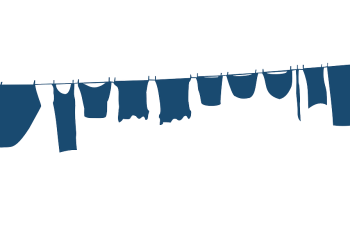Haute couture, synonymous with luxury, craftsmanship, and exclusivity, has a storied history that has shaped the fashion industry. This elite form of fashion design represents the pinnacle of creativity and skill, showcasing the artistry of hand-made, custom-fitted garments. Here’s an exploration of haute couture’s origins, evolution, and its enduring impact on the world of fashion.
Origins of Haute Couture
The term “haute couture,” meaning “high sewing” or “high dressmaking” in French, emerged in the mid-19th century:
- Charles Frederick Worth:
- Often regarded as the father of haute couture, Worth established the first true fashion house in Paris in 1858.
- He revolutionized fashion by introducing seasonal collections and presenting designs on live models, allowing clients to choose and customize their garments.
- The Rise of Paris:
- Paris became the epicenter of haute couture, attracting aristocracy and wealthy clients seeking exclusive designs.
- Fashion houses like House of Worth, Callot Soeurs, and Doucet set the standard for luxury and innovation.
The establishment of haute couture in Paris laid the foundation for its global influence.
Early 20th Century: The Golden Age of Haute Couture
The early 1900s marked the rise of iconic designers who shaped the modern fashion landscape:
- Coco Chanel:
- Chanel redefined women’s fashion by introducing comfortable, elegant designs that rejected the constraints of corsets.
- Her timeless creations, such as the little black dress and tweed suit, remain staples of haute couture.
- Paul Poiret:
- Known for his groundbreaking, corset-free silhouettes, Poiret embraced bold colors and exotic inspirations.
- Jeanne Lanvin:
- Lanvin’s intricate embroidery and youthful designs captured the spirit of the 1920s.
This era solidified haute couture as both an art form and a reflection of societal changes.
Post-War Revival and the New Look
After World War II, haute couture experienced a resurgence:
- Christian Dior’s New Look:
- In 1947, Dior introduced the “New Look,” characterized by cinched waists, full skirts, and an emphasis on femininity.
- This collection rejuvenated Parisian fashion and reestablished France as a leader in luxury design.
- Balenciaga and Innovation:
- Cristóbal Balenciaga’s architectural designs and mastery of fabric manipulation set a new standard for couture craftsmanship.
- Pierre Balmain:
- Balmain’s elegant and glamorous designs catered to Hollywood stars and socialites, further elevating the allure of haute couture.
The post-war period marked a renaissance for haute couture, blending tradition with innovation.
The Evolution of Haute Couture in the 20th Century
As the fashion industry expanded, haute couture adapted to changing times:
- Expansion into Ready-to-Wear:
- Designers like Yves Saint Laurent introduced prêt-à-porter (ready-to-wear) lines, making high fashion more accessible while maintaining their haute couture roots.
- Global Influence:
- Couture houses attracted international clients, including royalty, celebrities, and wealthy elites from around the world.
- Collaborations and Media:
- Collaborations with artists, photographers, and magazines helped haute couture reach a wider audience.
Despite these changes, haute couture remained synonymous with exclusivity and artistry.
Modern Haute Couture
Today, haute couture continues to captivate the fashion world:
- Contemporary Innovators:
- Designers like Karl Lagerfeld (Chanel), John Galliano (Dior), and Maria Grazia Chiuri (Dior) have brought fresh perspectives to traditional couture.
- Technology and Craftsmanship:
- Modern couture incorporates advanced techniques, such as 3D printing and laser cutting, alongside traditional handwork.
- Inclusivity:
- Couture houses are embracing diversity in their designs, models, and clientele, reflecting a more global perspective.
Haute couture’s ability to blend heritage with innovation ensures its continued relevance.
The Role of the Chambre Syndicale de la Haute Couture
The Chambre Syndicale de la Haute Couture, established in 1868, regulates and preserves the standards of haute couture:
- Membership Criteria:
- To qualify as an official haute couture house, designers must create custom garments for private clients, employ a workshop in Paris, and present collections twice a year.
- Prominent Members:
- Chanel, Dior, Givenchy, and Schiaparelli are among the distinguished members of this elite group.
This organization safeguards the integrity and tradition of haute couture.
The Enduring Appeal of Haute Couture
Haute couture remains a symbol of luxury and artistry:
- Craftsmanship:
- Each piece is meticulously handcrafted, often requiring hundreds of hours to complete.
- Exclusivity:
- With limited clientele and bespoke designs, haute couture offers an unparalleled level of personalization.
- Inspiration:
- Couture collections influence ready-to-wear lines and shape global fashion trends.
Haute couture continues to inspire awe and admiration, representing the pinnacle of fashion excellence.
From its origins in the salons of Paris to its modern-day runway spectacles, haute couture embodies the essence of luxury, creativity, and craftsmanship. Its rich history and enduring influence ensure that haute couture remains a cornerstone of the fashion industry, celebrating the artistry and innovation of designers past and present.








